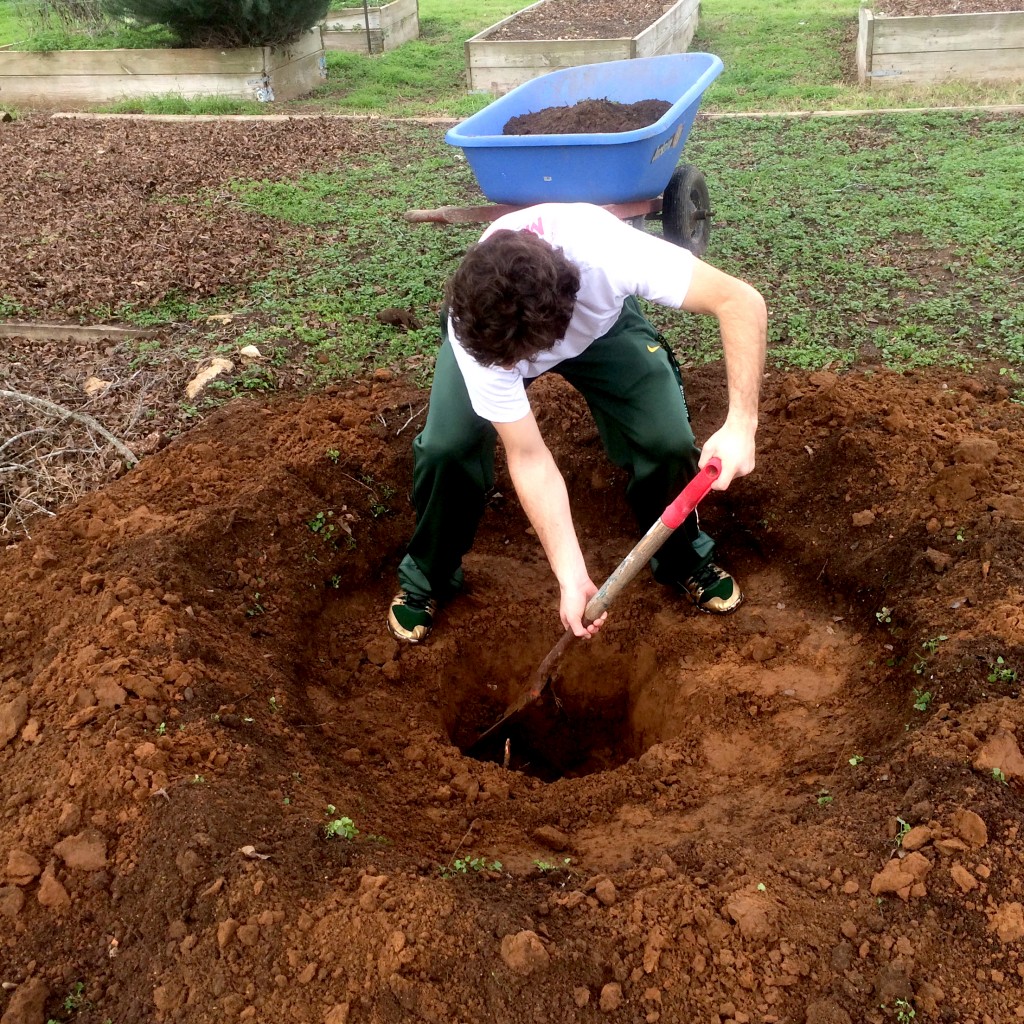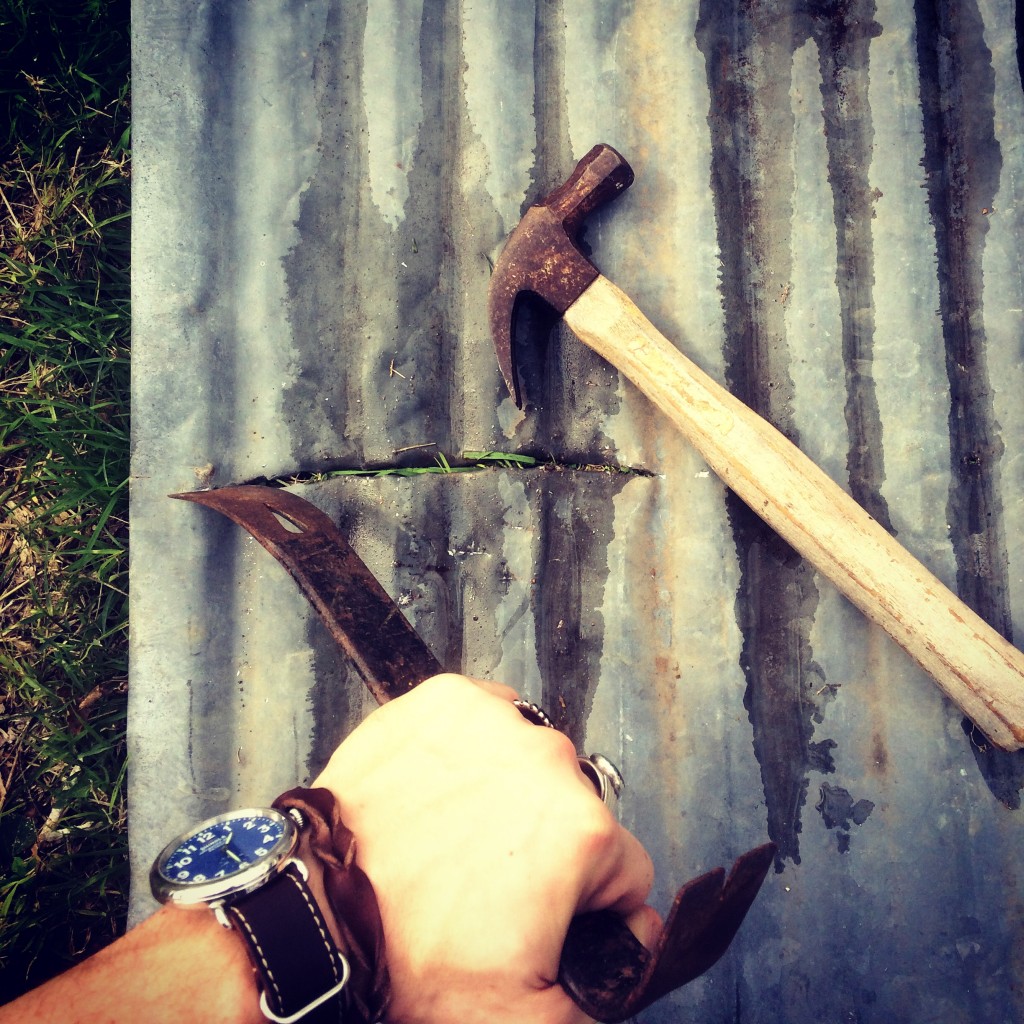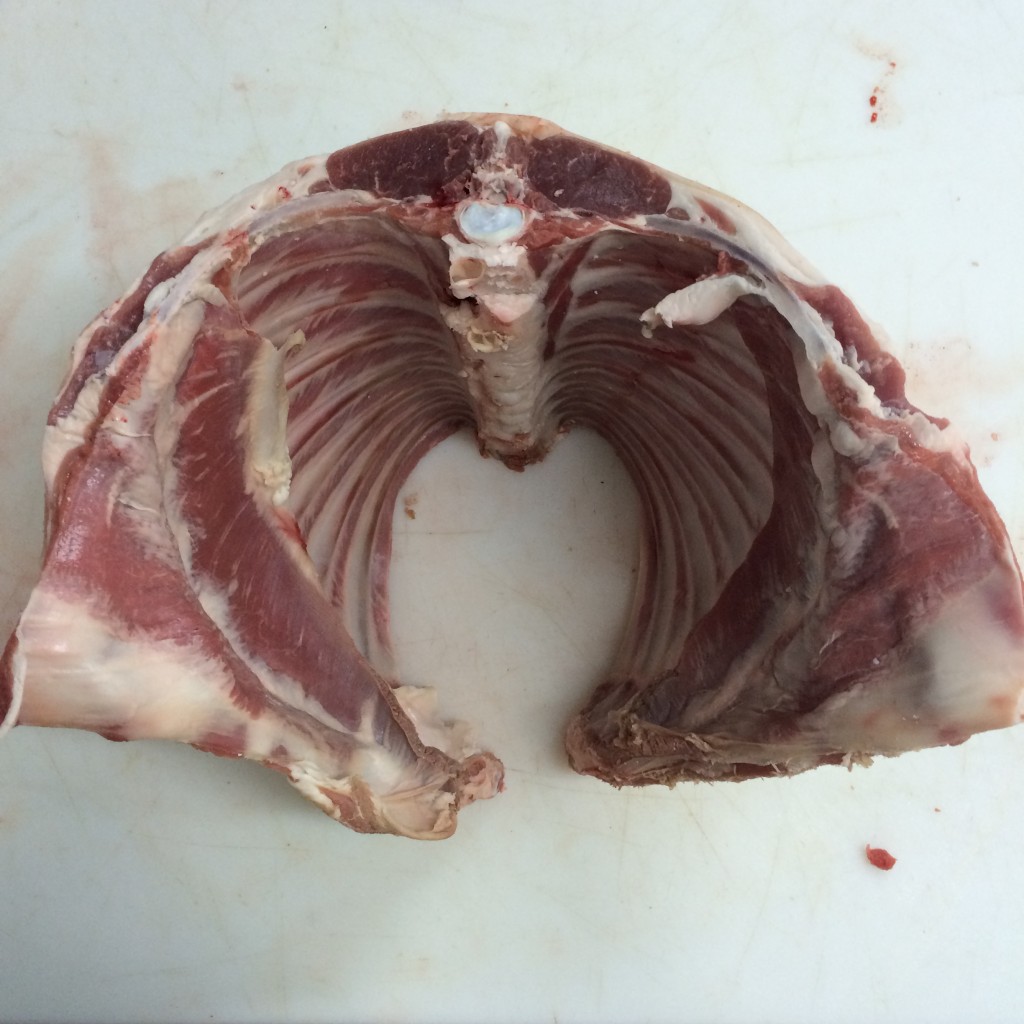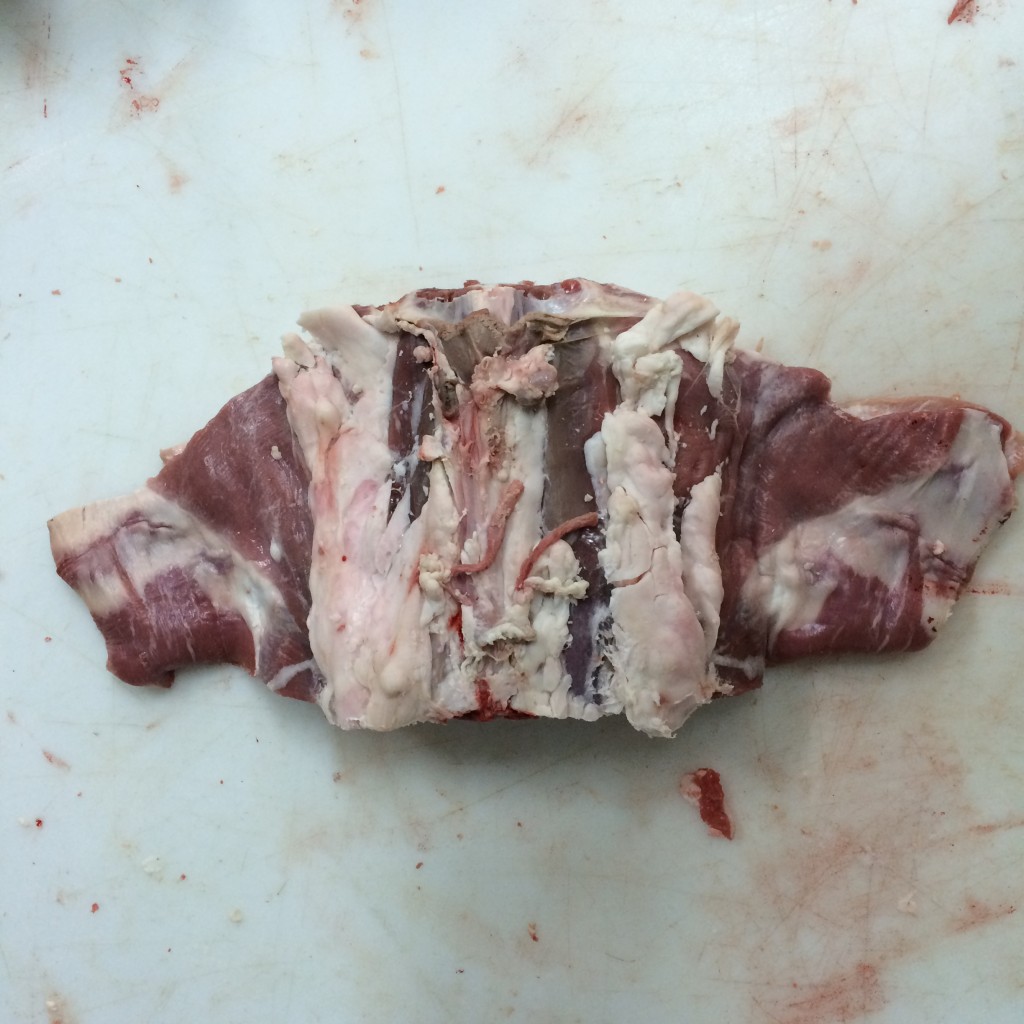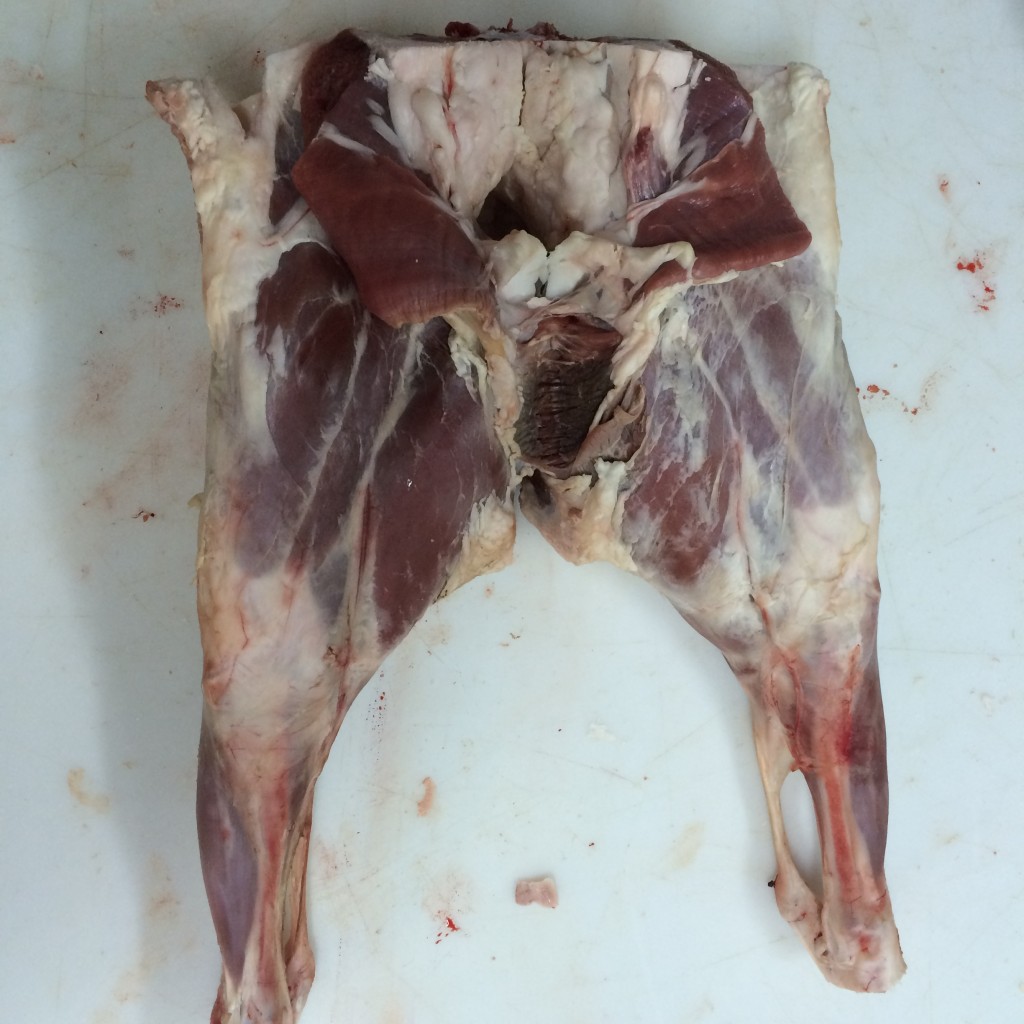I’m not much of a recipe person. Instead of teaspoons and tablespoons, my measurement system relies heavily on “dashes of this” or “hints of that.” I am comfortable with this system because it usually doesn’t fail me. In this case, this system completely failed me. In this case, I am Mayhem from the All State commercials, wanting to cut down a large tree. I watched two minutes of a 9-minute, DIY, meat pit video then went and "rented the biggest chainsaw I could find".
Yeah, it only gets worse from here, but hopefully someone will read this and propel himself to give it a better shot.
In the last weeks before I departed for New York, I caught wind of a new Netflix series entitled “Chef’s Table.” If you love food, I highly recommend you checking out this series. I absolutely love the show. Can’t wait for Season 2. My favorite episode depicted the life of the famous Argentinean chef, Francis Mallman. He spends most his time cooking outdoors in rural Patagonia where he also owns his own island
Yeah, crazy right?
In the Mallman episode, Francis and his band of gypsies-chefs constructed a meat pit by digging a hole in the ground, building a fire, wrapping some food up in leaves, and then burying it all in the hole. This style of cooking is known as “Curanto” in Patagonia. Mallman explained people all over the world have been cooking in pits or "earth ovens" for over 12,000 years. He also said the taste of the meat and vegetables from a pit were amazing… and he also mentioned something about,
“...potatoes you could suck through a straw.”
If people 12,000 years ago were doing pits and making all this amazing food like "potatoes that you can suck through a straw", then I sure as hell should be able to do the same now in the 21st century... I just really wanted some of those potatoes.
Again, I recruited my younger brother, Sam, who was still home on Christmas break. Compared to Mallman’s band of gypsy-chefs, we were a little outmanned and inexperienced, but hey, I had watched an entire two minutes of the nine-minute, DIY video.
After trip to the local meat market, we had all the food staples we would need: 1 Boston butt (commercially raised), half dozen potatoes, half dozen yams, and four onions. I had also thawed out the second and last Boston butt from New York. (remember it was free-range pork) Comparing the two pork butts yielded a large difference, not only in price per pound, but also in appearance. The meat pit would be my personal test to see which pork really was the best.
Sam and I decided to make the process simple and thought we could use the family fire pit out on the patio. It is a nice circular pit, edged in Texas limestone and situated just perfectly to watch college bowl games and tend the fire simultaneously. We simply needed it to be a bit deeper to bury the meat and veggies ala Mallman. So we start digging and about 12 inches into it we hit a PVC pipe that services the swimming pool.
What knucklehead put a PVC pipe underneath a fire pit?
Backup plan in action, we relocated the pit to Nana’s raised and currently dormant, garden. We dug and dug, finally getting a nice 3-foot deep pit.
Now we would need something large to cover up the cavity. I quickly recycled some corrugated tin panels from an old barn and used some Boy Scout ingenuity to cut them to fit. The necessary tools were unavailable.
Next, we laid down some lava rock then got a nice sized fire going. While we waited for our bed of coals to form, I threw some salt and pepper on the vegetables and both Boston butts. Then per the video’s instructions, I wrapped everything individually in foil, then again in burlap. Some craft wire held the packages together and created a nice handle for lifting and moving the bundles while hot.
Late that night, after we had burned all of our wood and had some nice smoldering coals in the pit, we spread the rest of the lava rocks on top.Next we rounded up all of our “pit parcels” and doused the outer burlap wrappings with water. The water-soaked burlap would eventually create steam inside pit and slow cook the meat and vegetables over the next 12 hours.
This is where things got screwy. We set the parcels upon the lava rocks and immediately covered everything with dirt, followed with the tin cover.
You probably think I’m a dumbass. I kind of thought I was too for a bit. You can imagine my disappointment the next day around noon. With the entire family standing around the pit anticipating lunch and straw-sucking potatoes, I dug everything up to find it under cooked. The dirt had completely extinguished our coals. The gathering of family, once ready to feast, now trickled back indoors to grab their car keys and head into town for lunch.
Man, I screwed up. But was I going to squander this precious pork? Absolutely not. I was gonna give it another shot.
I wasted no time getting a second fire going. A little gasoline never hurt a meat pit, right? It does burn hair, though. After careful inspection in the mirror that night, I found that I had singed not one, but both sides of my head.
Like I said, we really are pyro maniacs.
Late that night, we had a decent amount of coals. We probably needed more, but I was rushing this second attempt so I could at least have Sunday lunch ready when the Family got back from church the next day. Again, we wrapped everything up, soaked it, and put it back on the coals. Again, we covered the mouth of the pit with 3 tin panels, but this time covered the panels with dirt. This looked right. Small holes in the tin allowed steam to roll out all night.
The next morning, the Family gathered for lunch.
Recap:
- Pork looked beautiful, but my seasoning was really weak.
- The New York pork had good flavor, but lacked seasoning as I mentioned above. It quickly got shredded and combined with some salt and brown sugar for lunchtime pulled pork sandwiches.
- Nobody touched the Texas pork. But the Sisters sure did love the flavor!
- All the potatoes were overcooked. Yes, I was deprived of the potatoes that you could suck through a straw.
Note: If you try this at home, don’t cover your meat packages and coals with dirt. The steam needs a pocket to properly cook everything.
...and hey, let me know if anyone achieves the straw-sucking potatoes. I still want to try those.

